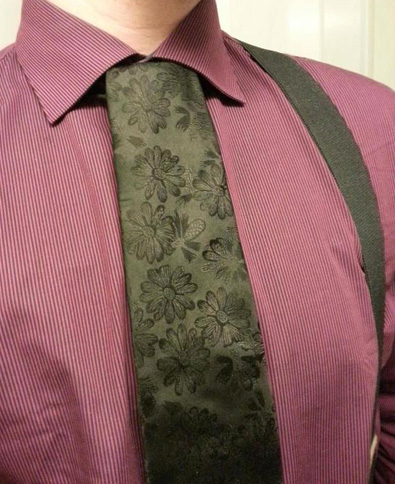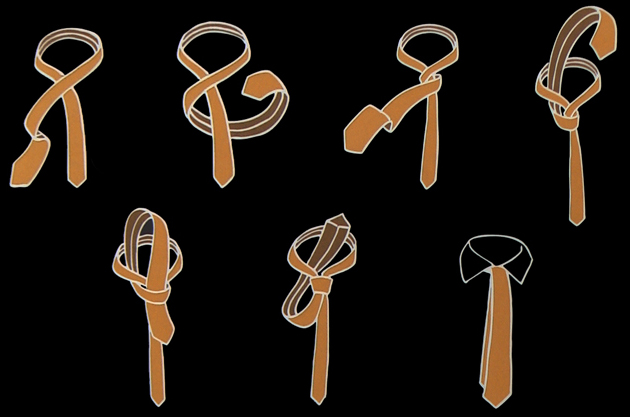For men, this variant of the Four-in-hand is more suitable for prom or for eccentric millionaires. Women who come to work wearing a tie can look more freely and should at least be tempted to this node.
Immediately after the name can be recognized by the inventor of this method of tying a tie: Aristotle Onassis, the great cannon multimillionaire, further discordant as the husband of Jacqueline Ken Neda – the widow of an American President. Onassis changed Plain Four-in-hand: instead enlist wide end of the tie in the last step of binding, slipped it back inside and translated loosely over the node to the front.The collar, which fits this node and that Onassis always wore it Haifish with a very wide apart with the tips. Material tie should not be too thick. Best fit to this node the quality of a typical fabric, slightly invoiced. To tie was not emphasized even more than it already is thanks to this unique node should be as the most stylish and one color.
Important
The first five steps are performed exactly as the binding of the Four-in-hand. Last, the sixth is easier than it looks in the picture. Most importantly, you led the wide end back to the bottom of the loop, the knot in the opposite direction (right-handed – the right). Then simply pull down along the neck to the end of pulling and leaving the node that fell freely on it forward.
How to Tie an Onassis Necktie Knot
In a few words
- – Collar with widely spaced tips of
- – Asymmetric
- – Stylish tie, possibly one color
- – Lightweight fabric and the typical thickness
- – Tie for men and for informal occasions
- – Does not resolve itself
- – Not suitable for work
- – To “neutral”



Onassis was not the inventor. Dr Goebbels wore this kind of tie with a stickpin (when he wasn’t wearing an oriental knot). He probably didn’t invent it either.